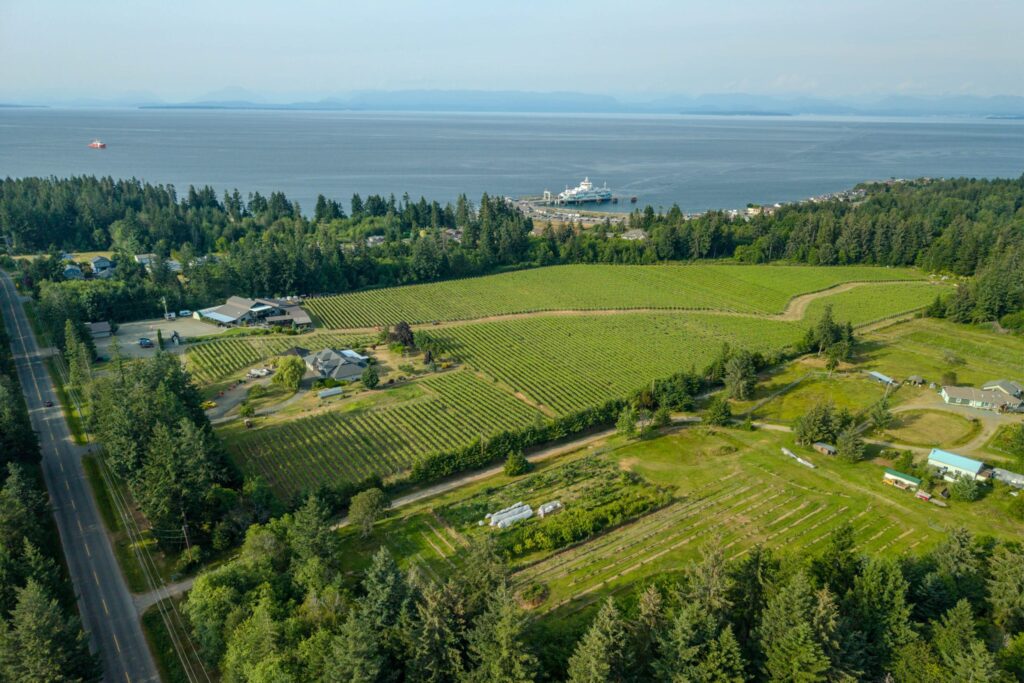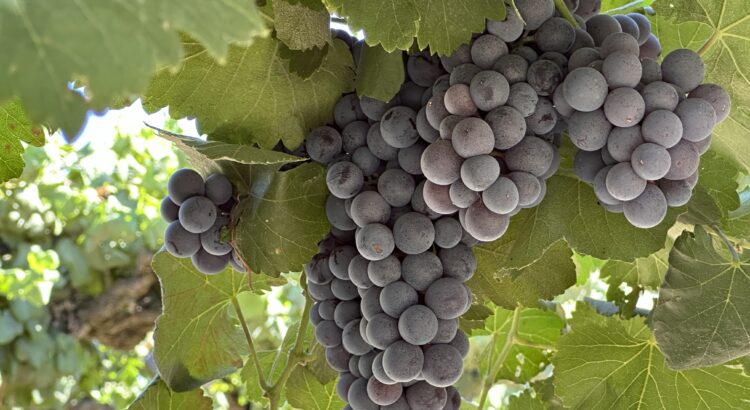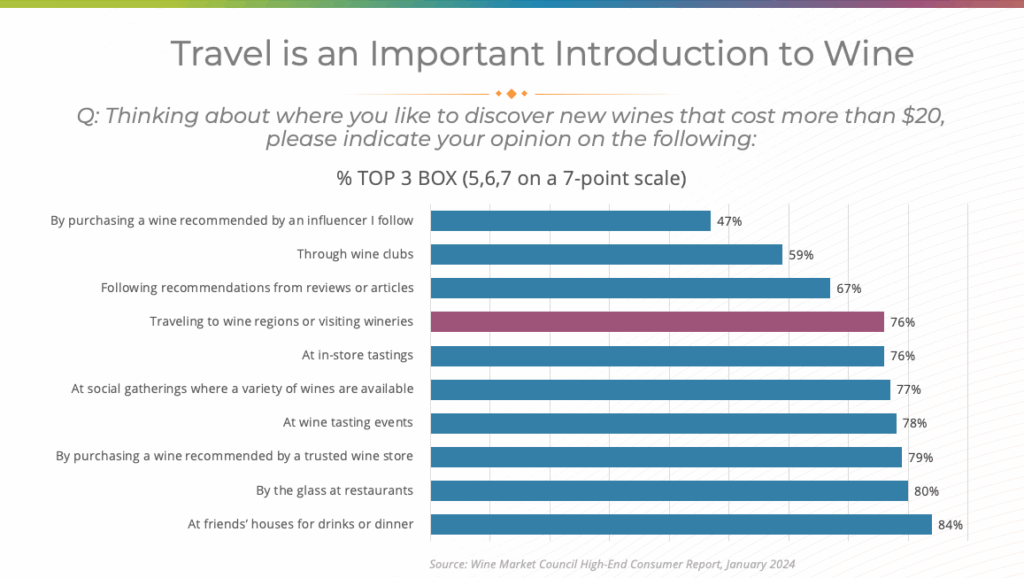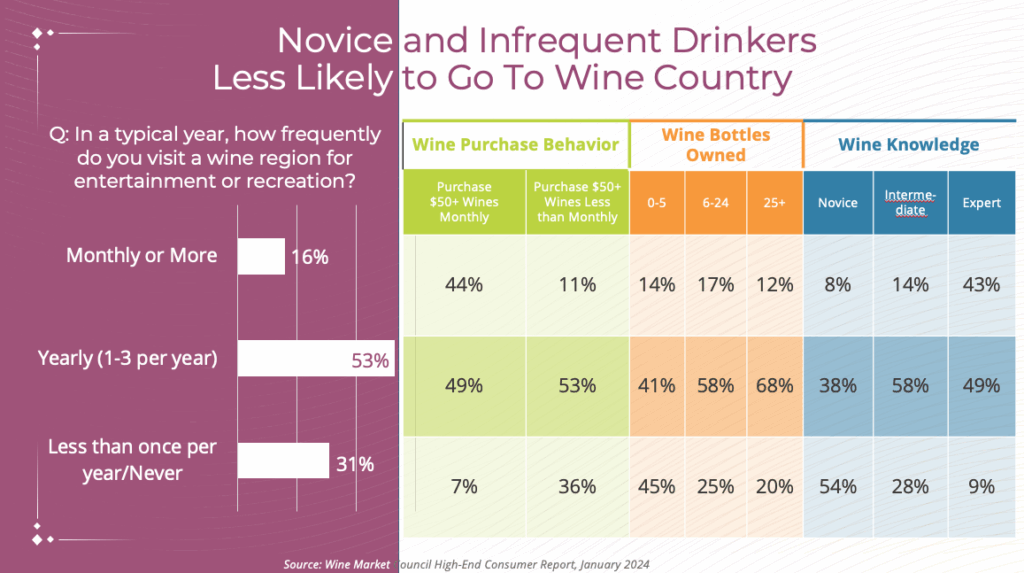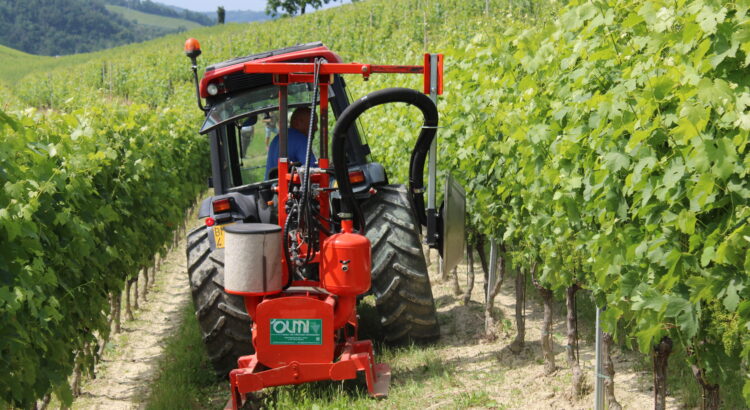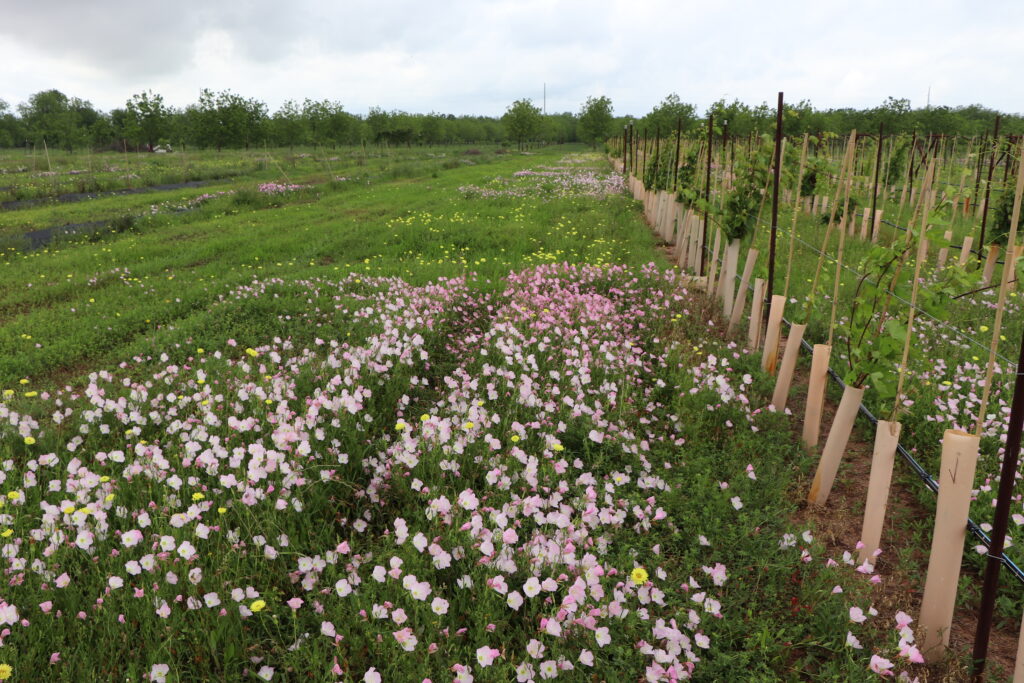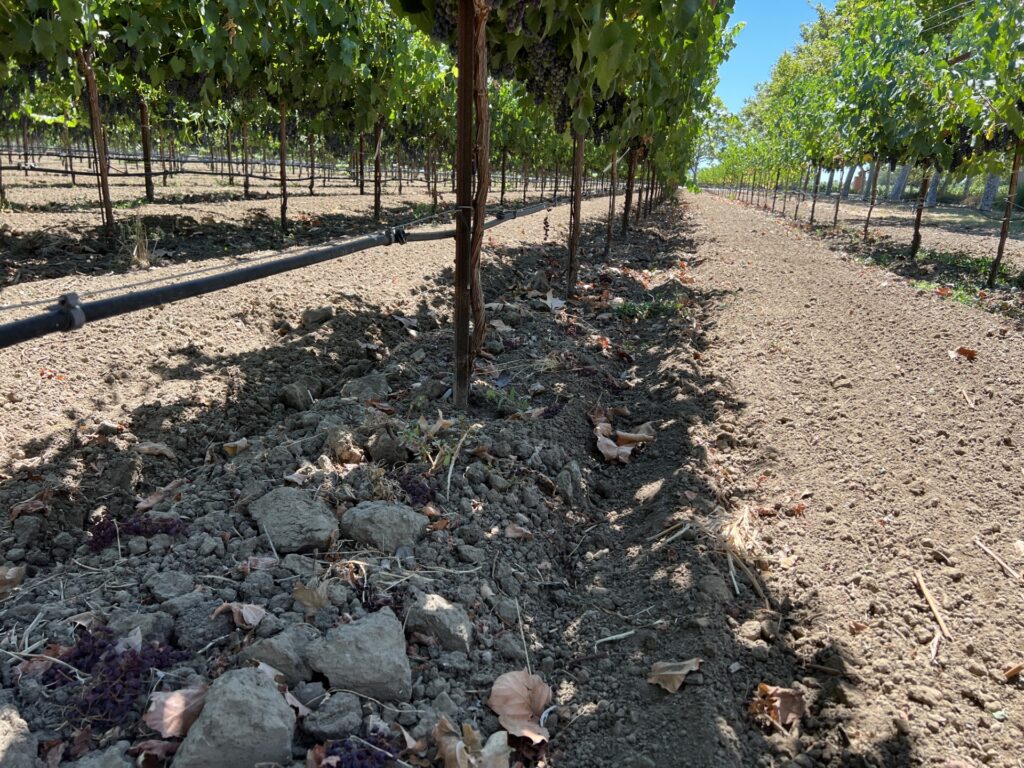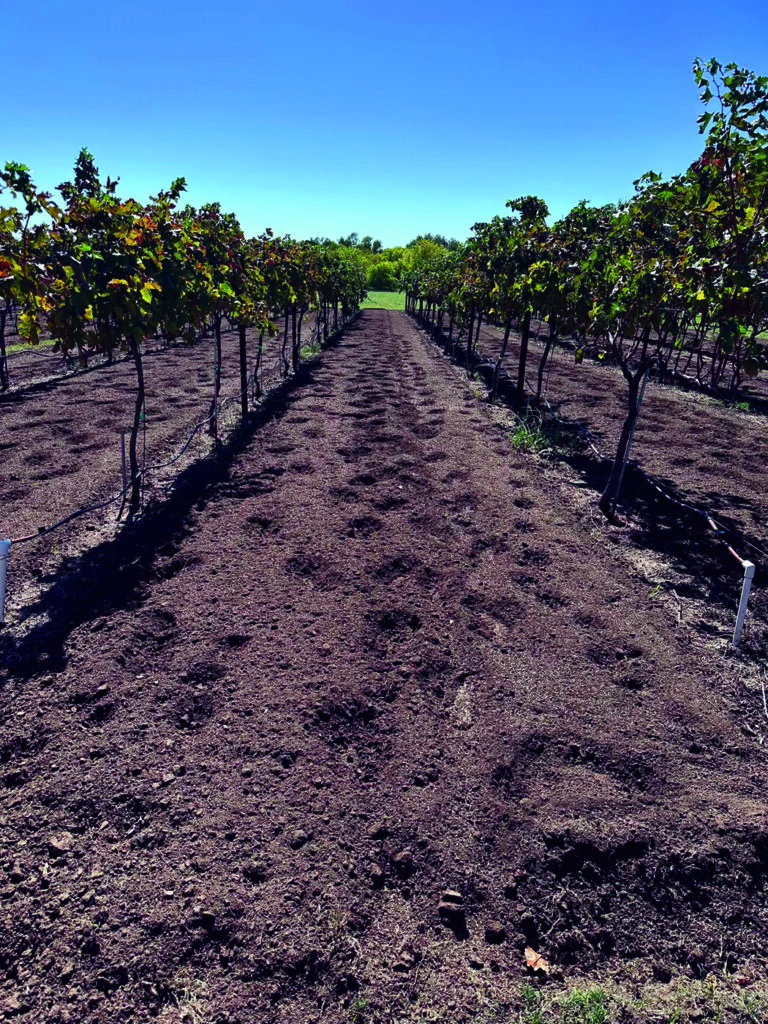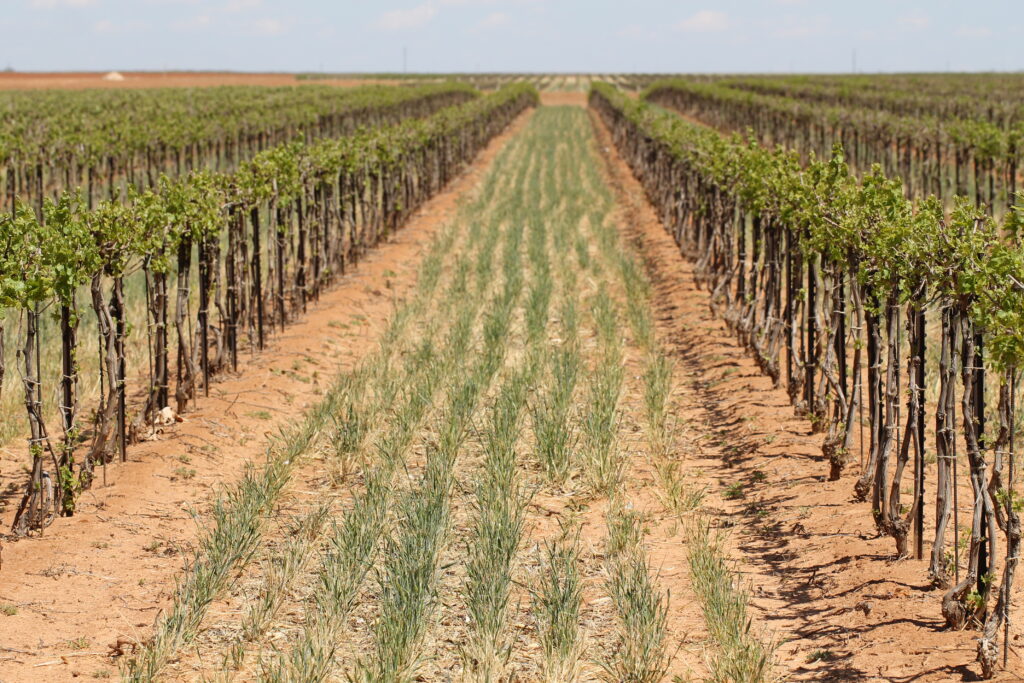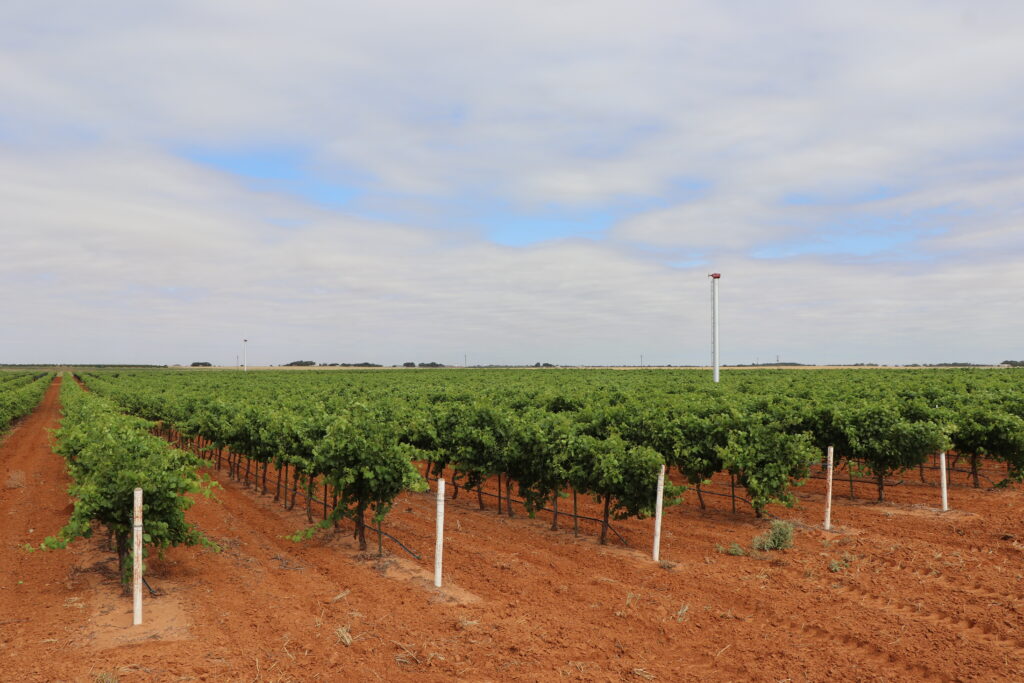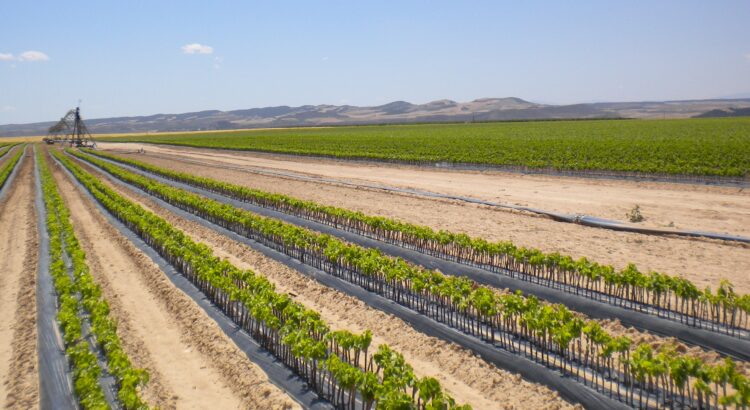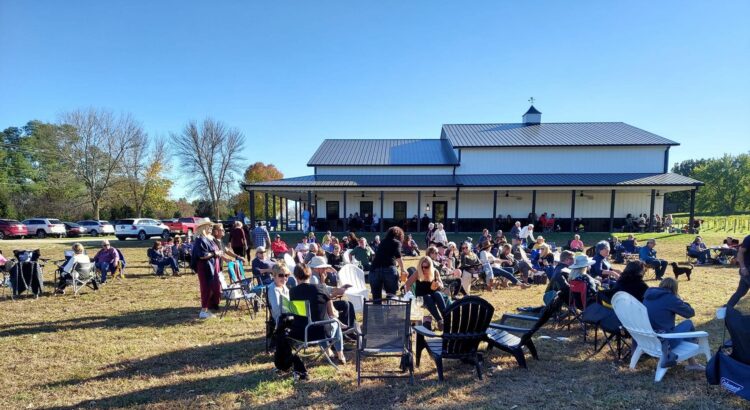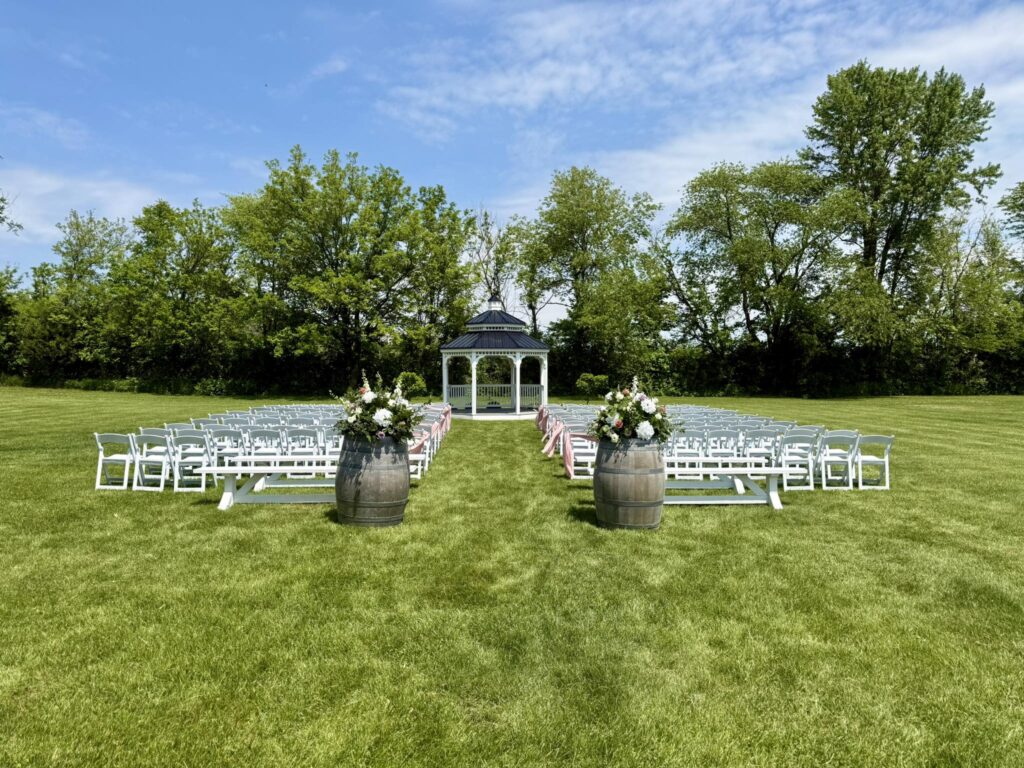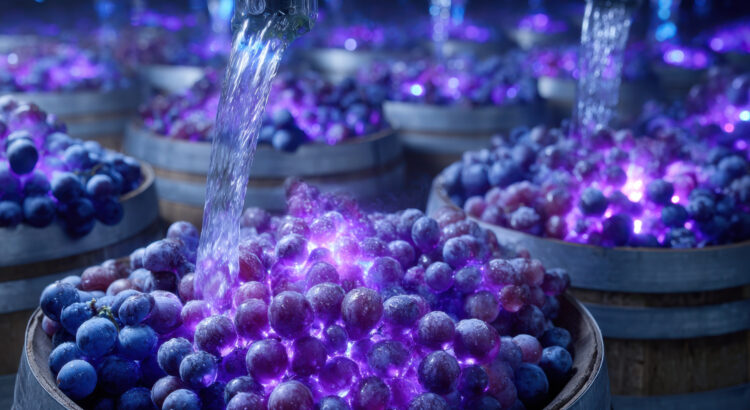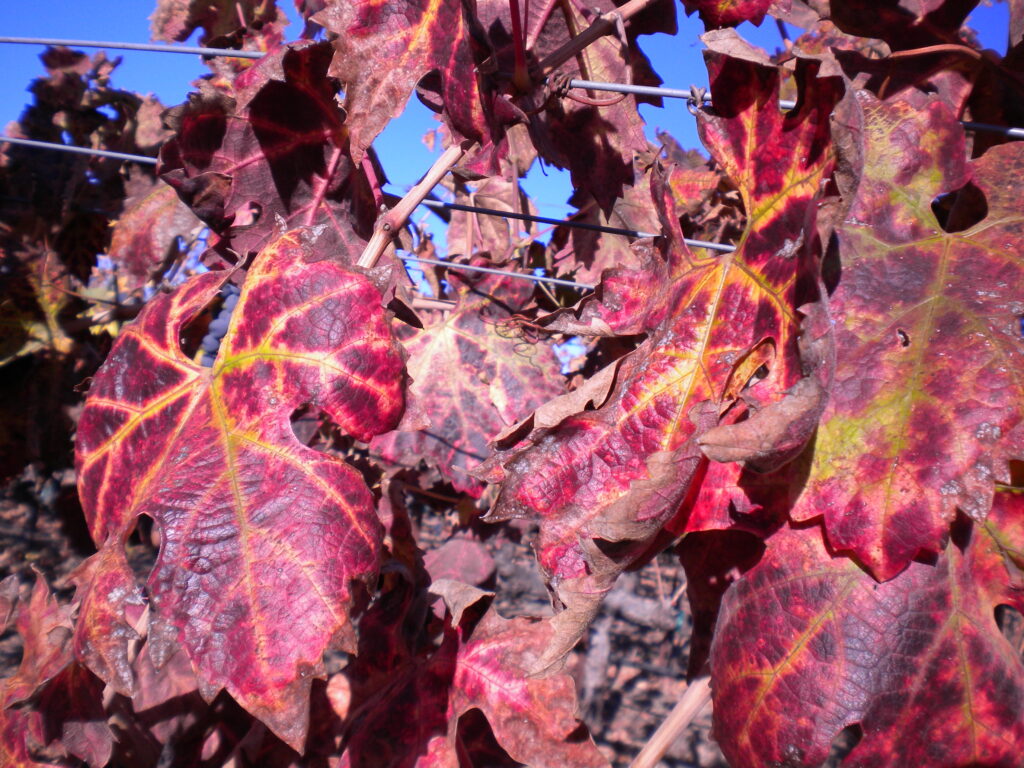
By: Judit Monis, Ph.D.
The symptoms of red blotch virus infection become more pronounced and progress in vineyards late in the summer towards the fall season. Therefore, it is timely to provide an update in this issue of the magazine. In addition, this summer I attended a session on Grapevine red blotch disease at the 76th National ASEV (American Society of Enology and Viticulture) Conference held in Monterey, California. Here I will summarize information on the biology, symptoms, transmission, and management of the virus responsible for red blotch disease plus a brief synopsis of two relevant ASEV oral presentations.
Red Blotch Disease
Red blotch is one of the most important viral diseases in grapevines. The main symptoms are expressed in red-fruited grape varieties in the late summer/fall season. It is difficult to distinguish symptoms of leafroll from red blotch disease. Because of this and until 2012 in which the virus was characterized, growers thought that their vines were infected by a yet uncharacterized species or strain of leafroll virus. Grapevine red blotch virus (GRBV) genetic material is DNA rather than RNA, belongs to the Grablovirus genus within the Geminiviridae family. Foliar symptoms include reddening, or yellowing of leaves depending on the grapevine variety. Very often, Grapevine red blotch virus infection displays leaf discoloration which usually appears spotty or blotchy. In red fruited varieties, GRBV infected vines may display red veins, but red veins have also been observed in non-infected vines, and many red-blotch infected vines do not display red veins. In white-fruited varieties red blotch disease displays yellow blotchy discoloration in leaves. genus Visual diagnostics can be complicated by the fact that grapevines often carry mixed infections of viruses and other pathogens. The most important negative effect of red blotch virus infection is the reduction of sugar in fruit resulting in lower Brix values and delayed fruit maturity. Two different genetic groups (clades) of GRBV have been reported but no differences in their biology or effect on symptoms in vineyards have been described. Just as seen with leafroll, the symptom expression of GRBV infected vines is affected by climatic conditions and the author has noted differences in the effect on sugar reduction in sunnier and warmer areas (i.e., California coastal areas with more fog and lower sunshine yield fruit with lower sugar concentration than the same grape clones grown inland with more sun/heat exposure).
Transmission, Spread of Leafroll and Red Blotch Viruses
Work by researchers at Cornell University and the University of California reported that the three-cornered alfalfa hopper (Spissistilus festinus) can transmit the GRBV in greenhouse and laboratory conditions. It is interesting that grapevine is not the preferred host for Spissistilus festinus that prefers to feed on legumes, grasses, and shrubs. Furthermore, the insect is not able to complete its reproductive cycle in grapevines. Because the virus is spreading in areas where the three-cornered alfalfa hopper is not present, research is in progress to determine if other insects are capable of transmitting the red blotch virus. Recently, it was shown that Tortistilus albidoparsus (another tree hopper) is a vector capable of transmitting GRBV. The rapid expansion of this virus in vineyards in USA and other countries (Asia, Europe, and South America ) was due to propagation and grafting of cuttings from infected vines.
Virus Diagnosis and Disease Management
The distribution and concentration of red blotch virus is uniform in infected vines. In fact, the detection of red blotch virus can be performed any time of the year. Further, work performed in my lab showed that red blotch virus can be detected in high titers in any part of the vine. The work showed that red blotch virus can be detected in any tissue tested, new or mature leaves, petioles, green or lignified canes, as well as cordons and trunks.
Keeping red blotch viruses out of the productive vineyards relies on clean planting stock programs. Because the causal virus is graft transmitted and has biological vectors it is important to implement a monitoring and sampling program at the nursery and production vineyards. Vines that are symptomatic or that test positive must be removed from the vineyard to avoid spread. Depending on the disease incidence (I have developed a statistical sampling formula to calculate and help make decisions), the removal of a few vines or the whole vineyard is recommended. The use of chemical control, although might be used to control GRBV vector is not presently recommended. However, the choice of cover crops that are less appealing to its insect vector’s diets might minimize their presence in the vineyards.
Highlights of ASEV Presentations
Effect of GRBV in Wine Quality: Raul Cauduro Girardello (University of California at Davis) presented research to determine if the length of time the vines are infected with GRBV have an effect on wine sensorial and grape chemical quality components. The study was performed with wine produced using grapes grown in an infected Merlot vineyard block located in Paso Robles (California Central Coast). The parameters analyzed in grapes were: soluble solids, titratable acids, pH, and phenolic composition. The wine produced were analyzed for basic chemical composition, volatile and phenolic compounds. In addition, descriptive analyses provided and evaluation of the wine’s sensory attributes. The study found no substantial difference in the analyzed fruit and wine parameters regardless of the time since the vines were infected. Interestingly, wines produced from recently infected vines were affected (not significantly), sensorially. Furthermore, the descriptive analyses demonstrated that panelists were able to distinguish the wine’s attributes based on how long the vines were infected. It would be interesting to learn if the results would be different in other growing areas such as Sonoma and Napa Valley vineyards.
Control of GRBV using Spray-Induced Gene Silencing: Christian Mandelli (Oregon State University, Corvallis) presented research on the application of double stranded RNA (dsRNA) to induce what plant virologists know as RNA interference. Compared with animals, plants do not have an immune system to defend themselves from the infection of viruses (or other pathogens). However, plants have developed a gene-silencing mechanism to respond to viral infections known as RNA interference (RNAi). Pathogen derived resistance has been applied to many plant species including grapevine (i.e., development of rootstocks resistant to fanleaf disease) using genetic engineering methods. Unfortunately, these rootstocks are not being used due to the lack of popularity and acceptance of genetically modified organisms (GMOs) by consumers. The study presented at the meeting proposes to bypass the use of GMOs by spraying small portions of double stranded RNA (dsRNAs) onto plants. The researchers report the finding of “hotspots” in the GRBV genome that can be targeted by the plant’s RNAi machinery to induce viral gene silencing, inhibiting the viral replication, ultimately suppressing viral infection. If the research is successful, a method for foliar application (spraying) of small interfering dsRNAs would provide resistance to GRBV replication and therefore reduce the detrimental effects of the virus. The project is interesting because the application of spray-induced gene silencing would provide a non-GMO strategy that could mitigate GRBV infection in vineyards.
Conclusions
Exciting new research is promising and may allow growers and nursery personnel to control GRBV infection. However, the production of clean planting grapevine stock still remains the number one prevention strategy to keep newly planted vineyards free of viral and fungal diseases. Presently, there is no clear recommendation on the needed isolation of foundation or nursery mother blocks and production vineyards. A prudential distance and isolation will help avoid infection of clean planting stock from diseased blocks. We know that the lack of symptoms does not correlate with a healthy diagnostic result. Therefore, it is recommended to test a statistical sample of the nursery propagated material to confirm the material’s health status. Obviously, nurseries and growers must determine the health status of grapevine stock prior to planting to avoid the propagation and/or introduction diseased vines to the vineyard. But as important is to isolate and monitor newly planted vineyards to avoid the introduction and propagation of disease via insect vectors.
Judit Monis, Ph.D. provides specialized services to help growers, vineyard managers, and nursery personnel avoid the propagation and transmission of disease caused by bacteria, fungi, and viruses in the vineyard. Judit (based in California) is fluent in Spanish and is available to consult in all wine grape growing regions of the word. Please visit juditmonis.com for information or contact juditmonis@yahoo.com to request a consulting session
